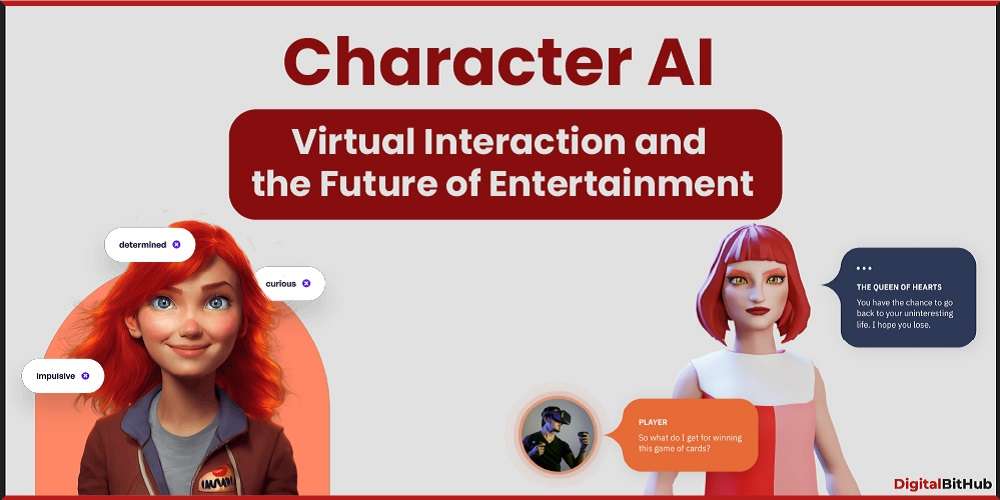If Character.AI is a new development or product that has been introduced since my last update, I recommend checking the official website, documentation, or any reliable sources associated with Character.AI for the most accurate and up-to-date information.
In general, if you’re looking to understand or use a technology related to character generation, artificial intelligence, or similar fields, the steps would typically involve:
Research:
Look for official documentation, websites, or publications related to Character.AI.
Check if there are any reviews or articles from reputable sources that provide insights into its capabilities and use cases.
Documentation:
If Character.AI has official documentation, carefully go through it. This should provide information on how to use the technology, its features, and any technical requirements.
Community and Support:
Join forums, communities, or social media groups related to Character.AI, if available. This can be a valuable resource for learning from others who have experience with the technology.
Tutorials and Examples:
Look for tutorials or examples that demonstrate how to use Character.AI. This could be available on the official website or community forums.
API or SDK Integration:
If Character.AI is an API (Application Programming Interface) or SDK (Software Development Kit), follow the integration guides provided. This usually involves obtaining API keys, understanding endpoints, and making requests.
Remember to stay updated with the latest information about the technology, as updates and improvements may occur over time.
“Character AI” can refer to various aspects of artificial intelligence related to characters in different contexts, such as video games, virtual environments, storytelling, and more. Below, I’ll provide an overview of different aspects related to character AI:
Non-Player Characters (NPCs) in Video Games:
Behavioral AI: Character AI in video games involves creating realistic and adaptive behaviors for non-player characters. This includes decision-making, pathfinding, and reactions to player actions.
Scripted vs. Dynamic AI: Some games use scripted AI where characters follow predetermined paths, while others employ dynamic AI that responds to the player’s actions and the game environment.
Natural Language Processing (NLP) for Dialogue:
Conversational Agents: AI characters can be designed to engage in realistic conversations with players or other characters. NLP enables these characters to understand and generate human-like text responses.
Procedural Content Generation:
Character Design: AI algorithms can generate unique characters by combining different traits, appearances, and personalities. This is often used in games and virtual environments to create diverse and interesting characters.
Emotional AI:
Emotion Simulation: Character AI can simulate emotions, affecting how characters express themselves and interact with the player or other characters. This adds depth to storytelling and player engagement.
Character Learning and Adaptation:
Machine Learning: AI characters can learn from the player’s behavior or adapt to changing game conditions. This enhances the overall gaming experience by creating more challenging and dynamic scenarios.
Ethical and Social Considerations:
Bias in AI Characters: Developers need to be mindful of biases that may be unintentionally programmed into AI characters. This is important for creating inclusive and diverse representations in virtual worlds.
Virtual Reality (VR) and Augmented Reality (AR):
Immersive Character Interaction: In VR and AR environments, character AI becomes crucial for creating realistic and immersive interactions. This includes gestures, eye movement, and spatial awareness.
Narrative Generation:
AI Storytelling: Character AI can be used to dynamically generate narratives based on player choices, creating a personalized and adaptive storytelling experience.
Character Animation:
Motion AI: AI is employed in animating characters to move realistically. This includes walking, running, and responding to the environment.

Multi-Agent Systems:
Group Behavior: In certain scenarios, character AI involves creating coordinated behaviors for groups of characters, such as crowds or teams.
As technology advances, character AI will continue to play a crucial role in creating more immersive and engaging digital experiences. Developers will explore new techniques and applications to push the boundaries of what is possible in terms of character interaction and storytelling.
If “character.ai” is a company, platform, or service, I recommend checking their official website, social media channels, or other reliable sources for the most up-to-date and accurate information. Additionally, you might find relevant information in news articles or reviews about the product or service.
If you have more context or details about what “character.ai” specifically refers to, I may be able to provide more relevant information or assistance.
Internal link: emitsnews





